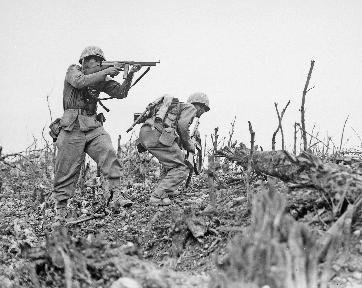Quiz Answer Key and Fun Facts
1. After suffering a decisive defeat in the 1943 Battle of Kursk and Soviets crossing the mighty Dnieper river in late 1943, the Germans and their Axis allies began a long and costly full-scale retreat under relentless pressure from Red Army. What was the approximate strength of German and Axis forces on January 1st 1944 across the entire 2200km+ (1380 miles) front?
2. After crossing Dnieper and establishing bridgeheads on its right bank, on December 24th 1943 Soviets launched "Dnieper-Carpathian Strategic Offensive" across the 700km+ (435 miles) front to liberate right-bank Ukraine. The offensive, which was divided into 10 operations, was conducted throughout January-April 1944. Which one of these attributes was NOT characteristic during Red Army advances in this offensive and for the rest of the war?
3. As part of Dnieper-Carpathian Offensive, in January 1944 Soviets launched "Korsun-Shevchenkovsky Operation" against German forces that held the bulge on the right bank of Dnieper, commanded by Wilhelm Stemmermann. The operation resulted in the encirclement of 60,000 Germans which the Soviets referred to as "little Stalingrad on the Dnieper". Germans tried to breakout in coordination with a relief attempt of other German forces. What was the fate of the Germans and the commander?
4. As part of Dnieper-Carpathian Offensive, in March 1944 Soviets launched "Uman-Botosani Operation". Despite poor weather and muddy conditions, by April, Soviets advanced 325km (200 miles), reached Carpathian Mountains, destroyed the German 8th Army, badly damaged the 1st Panzer Army and Romanian forces. In Moscow, on 26th of March 1944, salutes were fired from over 100 guns to honor the troops of 2nd Ukrainian Front. For what accomplishment did Moscow salute Soviet troops?
5. After four months of successful non-stop advance in difficult weather conditions, the Soviet Dnieper-Carpathian Strategic Offensive ended in late April 1944. This offensive and its ending had many consequences. Which one of these four aspects, listed below, was NOT an outcome of Dnieper-Carpathian offensive?
6. The Soviet advances from January to April 1944 had inflicted severe damage on the German Army Group South which was visibly shattered. What were the losses sustained by German Army Group South in these massive and intense 4 month battles?
7. At the end of Dnieper-Carpathian offensive, in April 1944 one famous Soviet military leader said the following: "Nazi Germany now resembles a wounded beast, which is forced to crawl into his lair to heal the wounds. But the wounded beast is even more dangerous. He must be pursued and finished in his own den." Who said this?
8. On June 6 1944 Allies finally opened the second front in France. Stavka (Soviet High Command) had planned their own major Soviet strategic summer offensives, which were greater than D-Day landings and whose ultimate aim was to break the backbone of German forces. How did Stavka planned to conduct their great 1944 summer offensives against the German Army Groups in the North, Centre, South and their Axis allies?
9. On June 22 1944, on the 3rd anniversary of German invasion, Soviets launched "Operation Bagration", a massive offensive in Belarus consisting of 2.3 million Soviet troops against 1 million strong German Army Group Centre. The success of the offensive exceeded Soviet expectations. Which one of these was NOT a reason that lead to astounding Soviet successes against Army Group Center?
10. The impact of Soviet Operation Bagration on the German war machine was enormous as it tore a huge hole in Wehrmacht defenses from which the Germans were not able to recover. In terms of advance and sheer numbers, how much damage did the Soviets managed to inflict on the Wehrmacht's Army Group Center from June to August 1944?
11. Operation Bagration and destruction of German Army Group Centre is considered to be the greatest German military defeat in history. The Soviet victory was so overwhelming that some foreign press agencies doubted whether the reports were accurate. Stalin decided to prove it. How did he prove it?
12. The success of Operation Bagration allowed the Soviets to launch a strategic offensive in the South. There, in August 1944 Soviets launched a major "Jassy-Kishinev Offensive" against German-Romanian forces stationed in Romania. The offensive was another astounding Soviet success in many regards. Which one of these aspects/results is NOT related with this operation?
13. Towards the end of 1944, the Red Army's Karelian Front launched "Petsamo-Kirkenes Offensive", a major offensive in the northernmost part of the front which expelled the German forces from Northern Norway. For what attribute this offensive is considered to be unique?
14. The year 1944 was extremely devastating for the German military. Not only did it suffer enormous back-to-back losses to the Red Army throughout the entire year of 1944, but it also had to face a two-front war from June 1944. What were the approximate casualties sustained by the Wehrmacht on the Eastern and Western Fronts during 1944?
15. "In battle after battle across an immense killing front, the Red Army tore the guts out of the German military machine" and "decided the fate of German militarism". Which famous Allied leader wrote this in his telegram to Stalin in late September 1944?
Source: Author
Uspech3da
This quiz was reviewed by FunTrivia editor
bloomsby before going online.
Any errors found in FunTrivia content are routinely corrected through our feedback system.
